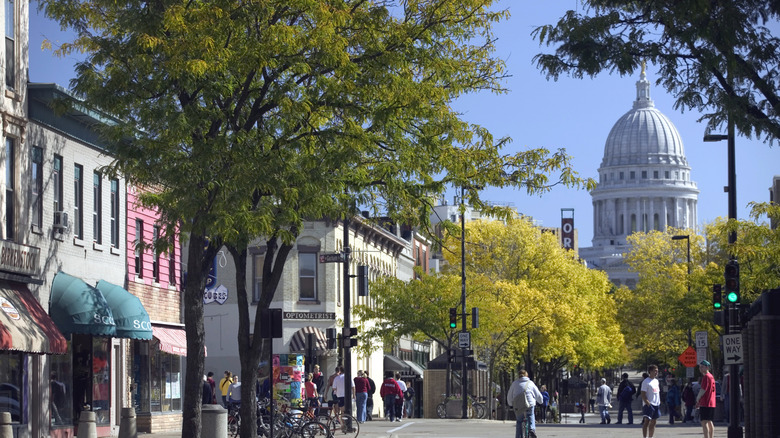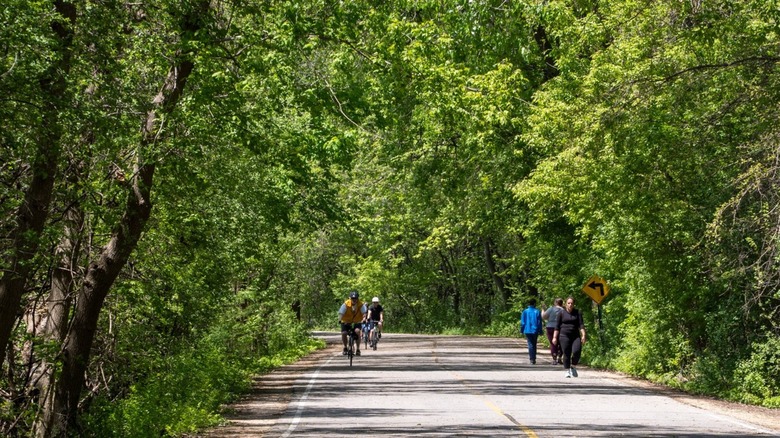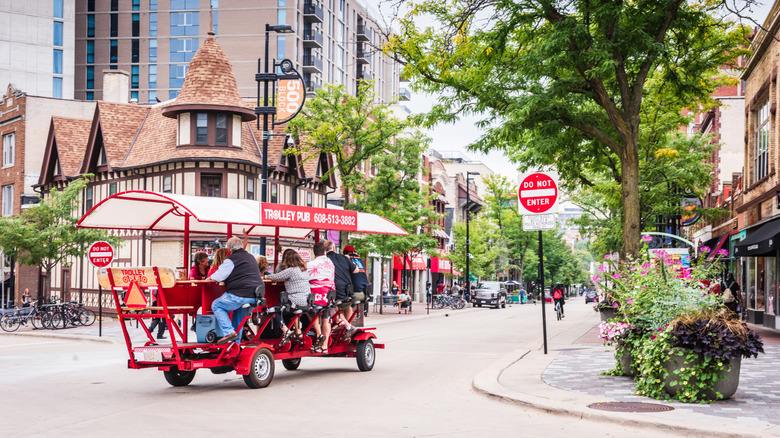A Mysterious Wisconsin 'Lost City' Offers An Enchanting Forest Adventure Through Scenic Trails
If you're looking for a unique vacation destination, few things may be more intriguing than a mysterious lost city. At first, you might assume you'd have to venture to some far-off locale in a remote section of the world. But instead, you only need to start at one of the best American college towns for a scenic weekend getaway, Madison, Wisconsin, to get to Lake Forest.
In this particular case, the term "lost city" has two distinct meanings. First, the city was lost to nature and time, as the project was abandoned before it could really get off the ground. Second, the city itself was lost because of mismanagement, lack of investment, and, in a way, man's hubris against the power of Mother Nature. Overall, the entire "city" was never fully realized, so it remains a monument of what could have been.
So, while you don't have to solve riddles or run through ancient booby traps to explore this lost city, it's still worth a visit. Pack your hiking boots and a healthy sense of adventure, and let's try to find Madison's "lost city."
The tale of Madison's lost city
In the early 1900s, the area currently occupied by the University of Wisconsin was envisioned as a planned community to rival Madison. Because Madison's population was exploding at the time, developer Chandler P. Chapman outlined his vision for "Lake Forest." The idea was to create a thriving neighborhood of homes, streetcars, playgrounds, and natural elements abound. The project was lofty, calling for 1,000 lots and over 7,000 dwelling units.
Construction began on Lake Forest around 1911. The Lake Forest Company was in charge of the initial infrastructure, including roads, initial homes, and what was supposed to be 7,000 feet of canals. Why canals, you ask? Not because Chapman envisioned his own version of Venice, but because the marshy terrain was much too wet for stable foundations. The canals would help dry the land so buildings wouldn't sink into the mire.
Unfortunately, out of 1,000 lots available, only around 70 were sold, and many of them were purchased by investors, not prospective homeowners. Further exacerbating things was World War I, which siphoned building materials and a young, able workforce for the war effort. So, without sufficient funding or interest in the project, Lake Forest became a lost cause and work stopped in 1922. In many places, it was literally lost as the few buildings they did construct sank into the marsh. By the 1930s, the land was purchased by the University and incorporated into its 12,000-acre Arboretum.
Incorporating the lost city into your Madison vacation
The best way to get to Madison is to fly into the Milwaukee Mitchell International Airport. While in the city, be sure to check out one of America's best breweries, either before or after your expedition to the lost city. From the airport, it's about a 90-minute drive to the Arboretum. The Arboretum is free and open to the public daily from 4 a.m. to 10 p.m. In addition to the lost city, the area includes hiking trails, mixed-use trails (for winter activities), a visitor's center, and various gardens. On Arboretum maps, the Lost City Forest is clearly marked, so you can find your way through relatively easily.
Overall, exploring the lost city can take a few hours, depending on how much you want to see. You should dress according to the time of year you visit. However, even during the summer, the area is full of overgrowth and bugs, so it's best to stay covered up as much as possible. Plus, if you visit between April and November, you can take advantage of the Dane County Farmer's Market, the largest producer-only farmer's market in America, at the capitol building.
Finally, as far as lodging and amenities go, you're in the heart of Madison, so it's easy to find hotels, restaurants, and shopping centers that will fit your budget. Other nearby attractions include the Henry Vilas Zoo, the Allen Centennial Garden, and the Geology Museum.


